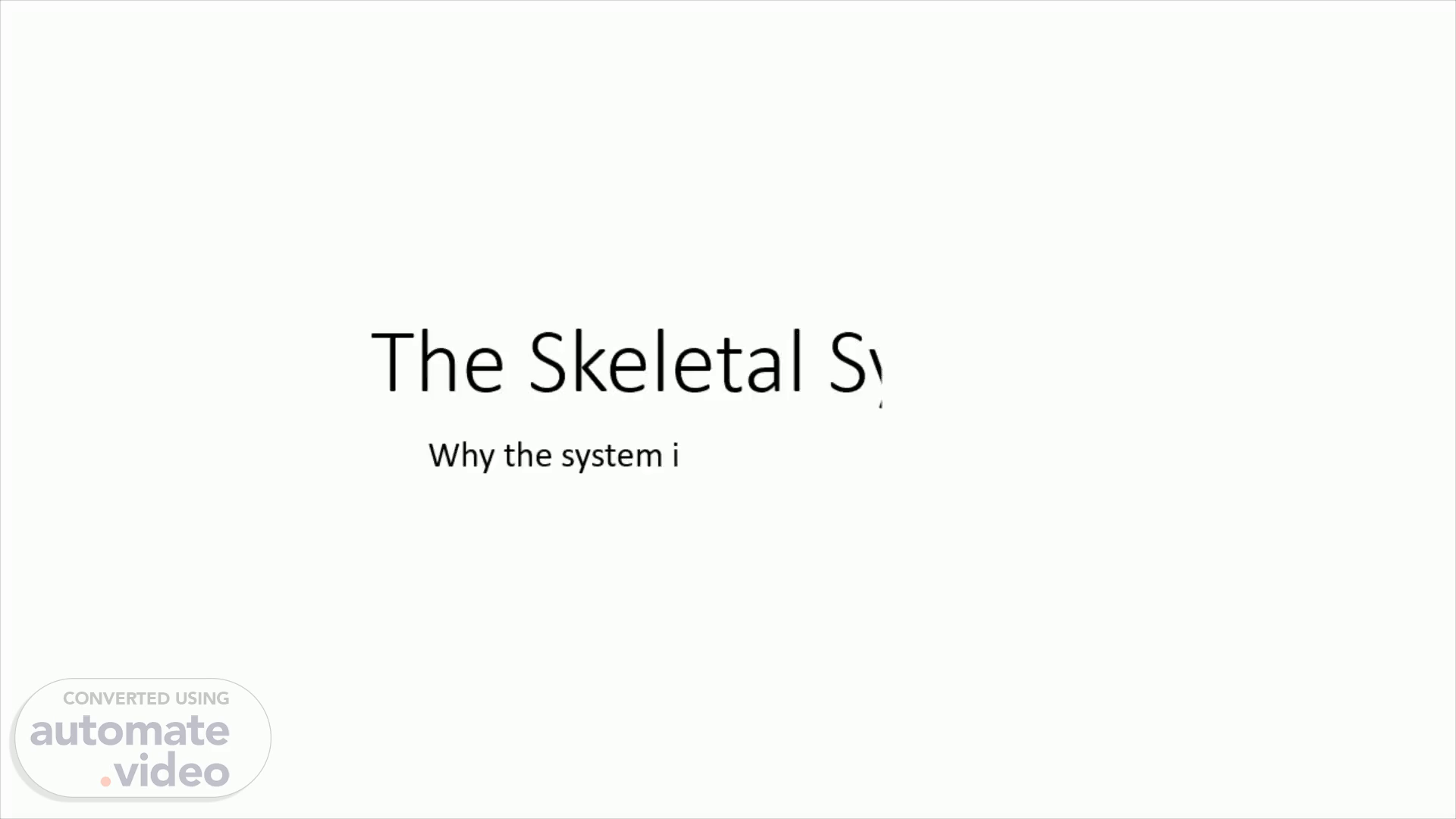
The Skeletal System
Scene 1 (0s)
The Skeletal System. Why the system is important to the body.
Scene 2 (7s)
The Skeletal System. The radiologic figure of a skeleton.
Scene 3 (38s)
Growing. The skeletal system enables the human body to grow. The bones assist our body from infancy all the way to adulthood in growing to form our shape. Bones grow two ways; longitudinally and thicker to support the height and weight of our adult bodies. A temporary period of longitudinal growth in the bones occurs in early childhood at the epiphyseal disc. There is cartilage beside this disc that is constantly growing in amount and grows closer to the diaphysis. As long as this process continues, the bones continue to grow longer until they have reached a maximum length for a person’s body. ( Herlihy , B. (2017). The Human Body In Health And Illness 6th Edition).
Scene 4 (1m 8s)
Growing In Width. Alongside the process of longitudinal bone growth and also afterwards, bones grow thicker and wider. Bone forming cells called osteoblasts are constantly reshaping the bones. There are also bone destroying cells called osteoclasts . The difference between them is that osteoblasts build new bones and osteoclasts break d own bone tissue which results in the center of the bone being hollow. When osteoclasts break down the bone tissue it is called resorption. Bone resorption is essential in regulating blood calcium levels because it moves calcium from the bones into the blood in addition to widening the bones. As a person grows older, the skeleton also grows with it along with the bones growing thicker and wider. (Cleopatra Nolin-Booth, 2022).
Scene 5 (1m 40s)
Providing Protection. Eac h one of the many bones in the body performs its own individual function and have equal level of importance to the body. For example, the cranium. The cranium consists of eight bones that function together to protect and encase the brain. A human face has 14 bones that form the shape and complete the facial structure. Within our posterior there are 26 bones, this is called the vertebral column. Some of the vertebral columns important functions to the body is making flexibility a possibility, en casing and protecting the spine, creat ing an attachment point for the pelvic girdle and also creat ing a supporting structure for the head and surrounding areas . In the anterior part of the body, the thoracic cage is a bony cage in the chest that is surrounding the heart and lungs as well as the liver and kidneys and some other abdominal organs to provide protection. (Cleopatra Nolin-Booth, 2022).
Scene 6 (2m 19s)
Mobility. Another very important function of the skeletal system that the human body requires is the ability to move parts of the body. The body use a specific vertebrae called th e at las and the axis. The atlas and the axis enable you to turn and rotate your head. Some vertebrates also enable attachment for ligaments, tendons and muscles w hile others work in coordination with the bones Your skeletal system allows m ovement by supporting your body weight to help you stand and move. Joints, connective tissue and muscles work together to make your body parts mobile. (Cleopatra Nolin-Booth, 2022).
Scene 7 (2m 47s)
Storing Minerals. The skeletal system plays an essential role in storing and releasing minerals for the body. Bones store a significant amount of minerals including calcium, vitamin D and phosphorus, and release them into the body as needed. Within the c entral cavity of the long bones there is marrow, red bone marrow is responsible for producing blood cells which in turn deliver oxygen to your body and help to fight off infections. (Cleopatra Nolin-Booth, 2022).
Scene 9 (3m 15s)
The Skeletal Systems Functions. Protects internal organs Stores and releases fat Produces cells Stores and releases minerals Facilitates movement Supports the body.
Scene 10 (3m 25s)
References. Images – https://www.innerbody.com/image/skelfov.html https://www.livescience.com/22537-skeletal-system.html https://open.oregonstate.education/aandp/chapter/6-1-the-functions-of-the-skeletal-system/ The Cleveland Clinic - The Skeletal System https://my.clevelandclinic.org/health/body/21048-skeletal Herlihy, B. (2017). The Human Body In Health And Illness 6th Edition.